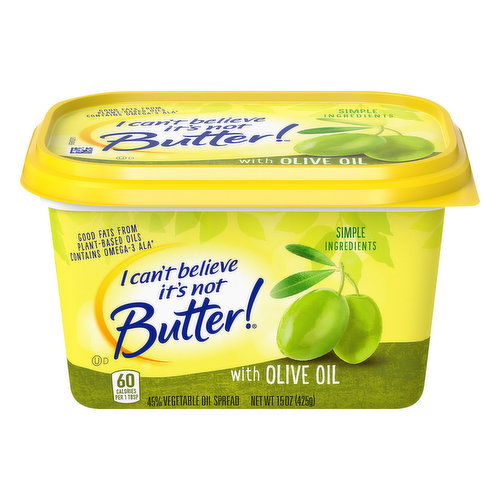
Apply Now


Practical Guide to Owl Diet: Essential Tips for 2025
Understanding What Do Owls Eat
Owls are fascinating nocturnal hunters with diverse diets. Knowing what owls eat is crucial for appreciating their role in the ecosystem. The primary components of an owl's diet include small mammals, birds, and insects. Their feeding habits vary based on species and habitat but generally consist mainly of rodents like mice and voles, which make up a significant portion of their diet. This dietary preference for small mammals demonstrates their effectiveness as predators, allowing them to control rodent populations in various environments. Another primary source of food is birds, which owls hunt during dusk and dawn. Smaller birds fall prey to various owl species, which exhibit remarkable hunting techniques such as silent flight and acute hearing. Insects, while less significant in quantity, also contribute to the overall diet of some owl species, especially those inhabiting specific habitats where insects are abundant. Overall, owls exhibit varied feeding behaviors depending on regional prey availability. Understanding these diets is essential for wildlife conservation, as maintaining a balance of prey species helps ensure healthy owl populations in local ecosystems.Owl Feeding Habits: Nocturnal Behavior
Owls are primarily nocturnal, which greatly influences their hunting and feeding habits. These raptors possess adaptations that enhance their nighttime hunting efficiency. For instance, large eyes provide excellent night vision, enabling them to detect movement and potential prey in low-light conditions. Additionally, their specialized feathers minimize noise during flight, making it easier to approach unsuspecting prey. Dietary preferences in owls also reflect the time of day they are most active. For example, many owls prefer hunting small mammals during the nighttime when these creatures are most active. Various species of owls have developed unique hunting strategies suited to their habitats, such as situating themselves on tree branches to survey ground activity before swooping down for capture. Understanding these behaviors allows for better owl conservation practices, emphasizing the need to protect natural habitats that provide suitable hunting grounds.Types of Owl Food: A Diverse Diet
The variety in owls' diets reflects their adaptability and role as apex predators. While small mammals dominate their food choices, birds and insects add necessary diversity. Different owl species exhibit distinct preferences shaped by their hunting techniques and habitat. For instance, Barn Owls often consume large quantities of small rodents, while Great Horned Owls might target larger birds and even some mammals, such as rabbits. Some owls, like the Eastern Screech Owl, also include insects in their diets, especially when small mammals are scarce. Such dietary versatility is crucial for survival, particularly in changing environments where competition for food can be fierce. Understanding owl dietary needs, including preferred prey size and type, can aid in wildlife management and conservation efforts, ensuring healthy ecosystems where these birds thrive.Owl Nutrition and Dietary Needs
Owls, like other raptors, require a balanced diet to meet their nutritional needs. The nutritional value of prey is vital in supporting their energy levels, particularly as they engage in the demanding activity of hunting. Essential nutrients come from the various types of prey they consume, and these can include proteins, fats, vitamins, and minerals. Juvenile owls, still developing their skills, often have different dietary needs compared to adult owls. For instance, they may rely more on readily available and smaller prey as they learn hunting techniques. Understanding these variations is essential for ensuring the proper care of both wild and pet owls, providing suitable diets that cater to their life stages. Proper nutrition is critical for owl growth, reproduction, and overall health. The implications of inadequate diets can lead to malnutrition, reduced reproductive success, and challenges in prey capture. Therefore, monitoring owl feeding behavior and dietary composition is vital for key conservation initiatives aimed at protecting these remarkable birds.Factors Affecting Owl Diet
Several factors influence the dietary preferences and habits of owls, including seasonal changes, environmental conditions, and competition with other predators. Seasonal variations often lead to shifts in prey availability; for instance, during winter, some small mammals may burrow and become less accessible, compelling owls to alter their food sources. Another consideration is the impact of human activity on owl diets. Habitat loss due to urban development or agriculture can drastically reduce prey populations, forcing owls to adapt their hunting methods or migrate to find suitable habitats. Moreover, pollution can affect the health of prey species, indirectly impacting owl populations. Understanding these dynamics is crucial for conservation efforts, emphasizing the need to prioritize habitat preservation and restoration initiatives. This knowledge aids in managing owl populations effectively and ensuring their survival in increasingly urbanized environments.Owl Hunting Techniques and Their Effectiveness
Owls utilize a range of hunting techniques that showcase their adaptability and predatory prowess. Their primary strategy is to survey their environment from a perch or while gliding silently through the air. This tactic allows owls to spot movement, enabling them to approach prey with minimal disruption. Common hunting methods include swooping down on unsuspecting prey and employing a technique called "silent flight," where their specialized feathers reduce noise, enhancing their stealth. Owl hunting success rates vary based on species and hunting skill. Some experts suggest that factors such as experience, habitat familiarity, and the nutritional value of available prey can influence overall effectiveness. Understanding specific owl hunting methods helps wildlife researchers monitor species behaviors and adapt conservation practices effectively. Moreover, seasonal changes can affect hunting efficiency, with some owls becoming more proficient during optimal conditions when prey is abundant. Tracking these success rates can lead to valuable insights about population dynamics and habitat requirements, thus informing targeted conservation strategies.Owl Diet Adaptations and Ecosystem Role
Owls play a critical role in maintaining ecological balance as predators in their environments. Their dietary adaptations are essential for regulating prey populations, affecting the overall health of ecosystems. By consuming small mammals and birds, they help control populations of these species, which can otherwise overrun habitats. Moreover, owls contribute to nutrient cycling within their ecosystems. The process of owl predation results in a variety of interactions within food chains, influencing the abundance and behavior of their prey. This role is particularly significant in urban ecosystems, where owls adapt by preying on rodents that thrive in human-modified environments. The ecological significance of owls extends beyond their immediate habitat. Monitoring their diets provides insights into environmental health, revealing changes due to habitat destruction, pollution, or climate change. Consequently, owls serve as important bioindicators, highlighting the impacts of such changes on wildlife and habitats, which is vital for ongoing conservation efforts.
Owl Nesting and Feeding Habits
During the breeding season, owl diets also shift to support the growing nutritional needs of their young. Parents typically focus on ensuring a consistent supply of food for their nestlings, which require a protein-rich diet. This includes hunting more frequently and targeting high-energy prey to promote healthy growth for juvenile owls. Fostering a nurturing feeding environment is critical as juvenile owls learn essential survival skills. Parents demonstrate hunting techniques, selecting appropriate prey sizes for their chicks. Observing these behaviors is vital for understanding owl biology and developing effective wildlife management strategies to support successful breeding. Research has shown that successful breeding seasons often correlate with favorable food availability. Therefore, examining owl nesting food habits provides valuable data to biologists and conservationists. Managing owl populations requires integrating knowledge of their dietary needs with habitat restoration efforts, ensuring that these magnificent birds continue to flourish.